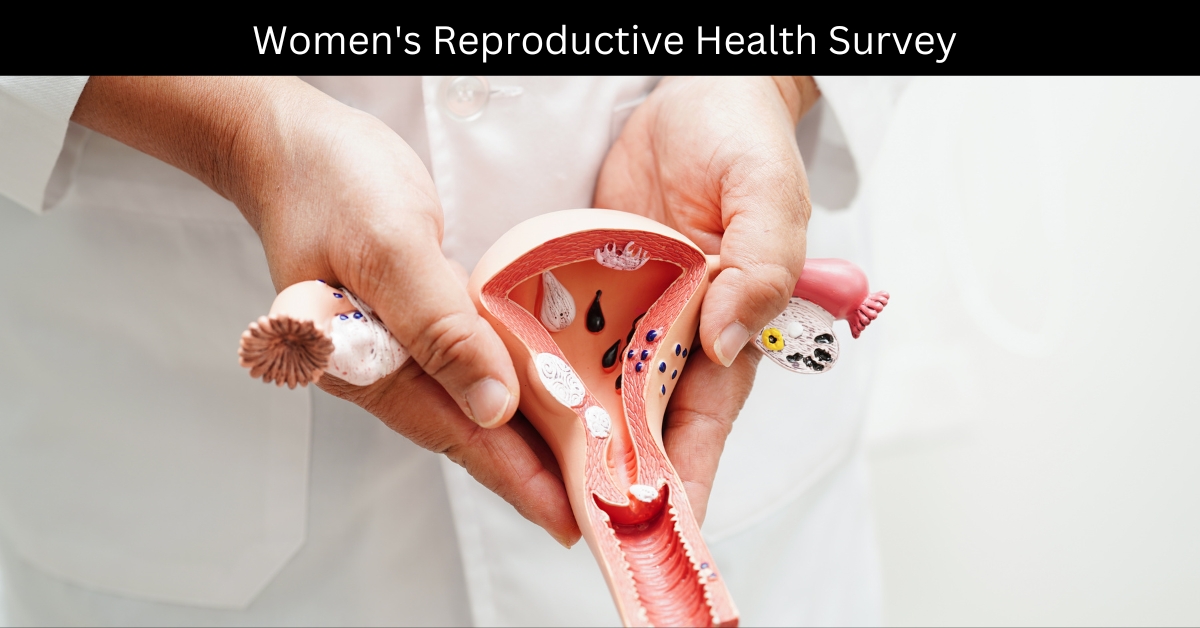In the ever-evolving digital landscape, the importance of producing content that truly benefits people rather than solely optimizing for search engine rankings has become increasingly clear.
This is particularly true when it comes to sensitive and impactful topics such as women’s reproductive health. The Google guideline we’ve discussed highlights the key principles to consider when creating content that is helpful, reliable, and people-first.
As we look into the topic of the women’s reproductive health survey, let’s explore how these principles can be applied to ensure we’re providing valuable and trustworthy information to our audience.
Key Takeaways:
- The women’s reproductive health survey aims to gather valuable insights into the experiences, needs, and concerns of women regarding their reproductive health.
- Content created around the survey should provide original, comprehensive, and insightful information, demonstrating expertise and trustworthiness.
- Prioritizing the user experience, with helpful headings, engaging tone, and satisfying user needs, is crucial for creating people-first content.
- Avoiding search engine-centric tactics and focusing on authenticity and substance over-optimization and volume is recommended.
- Key findings from the survey highlight areas like access to contraception, menstrual health awareness, prenatal care satisfaction, postpartum support challenges, and fertility/family planning concerns.
- Implications and recommendations include improving healthcare access, enhancing menstrual health education, fostering holistic reproductive health support, promoting inclusive and culturally responsive approaches, and collaborating with stakeholders.

Understanding the Significance of Women’s Reproductive Health
Women’s reproductive health encompasses a wide range of issues, from menstrual health and contraception to fertility, pregnancy, and postpartum care. It is a crucial aspect of overall well-being, impacting physical, emotional, and social aspects of a woman’s life. However, many women still face challenges in accessing accurate, comprehensive, and unbiased information about these topics.
The women’s reproductive health survey aims to shed light on the experiences, needs, and concerns of women regarding their reproductive health. By gathering and analyzing data from a diverse range of participants, this survey can provide valuable insights that can inform healthcare policies, educational initiatives, and the development of resources tailored to the specific needs of women.

Evaluating the Content for the Women’s Reproductive Health Survey
As we create content related to the women’s reproductive health survey, it’s essential to ensure that it aligns with the principles outlined in the Google guideline. Let’s dive deeper into how we can assess and optimize our content:
1. Providing Original, Comprehensive, and Insightful Information
- Original Research and Analysis: The content should present original research, findings, and analysis from the women’s reproductive health survey. This means going beyond simply summarizing or rewriting existing information and instead providing unique insights and perspectives.
- Comprehensive Coverage: The content should offer a thorough exploration of the survey’s topics, covering the full scope of women’s reproductive health issues and addressing the diverse experiences and needs of the survey participants.
- Depth and Nuance: The content should go beyond the obvious or surface-level information, delving into the complexities and nuances of the survey findings. This could include exploring the intersections of reproductive health with factors such as age, race, socioeconomic status, and cultural background.
2. Ensuring Trustworthiness and Expertise
- Transparent Sourcing: The content should cite the sources of the survey data and any additional information or research referenced. This helps to establish the credibility and reliability of the content.
- Demonstrating Expertise: The content should be created or reviewed by individuals or organizations with demonstrable expertise in women’s reproductive health, reproductive rights, and survey research methodologies.
- Avoiding Factual Errors: The content should be rigorously fact-checked to ensure the accuracy of the information presented, and any potential errors or discrepancies should be promptly addressed and corrected.

3. Prioritizing the User Experience
- Descriptive and Helpful Headings: The main headings and subheadings should provide clear and concise summaries of the content, helping users quickly understand the key topics being covered.
- Engaging and Informative Tone: The content should be written in a tone that is accessible, engaging, and informative, making it easy for readers to understand and absorb the information.
- Satisfying User Needs: The content should address the specific information needs and questions that users may have about the women’s reproductive health survey, providing them with a comprehensive and satisfying experience.
4. Avoiding Search Engine-Centric Tactics
- Authenticity over Optimization: The content should be created primarily to benefit the target audience, rather than solely to improve search engine rankings. Avoid tactics such as keyword stuffing, excessive automation, or producing content solely based on trending topics.
- Substance over Volume: Instead of focusing on producing large quantities of content, prioritize creating high-quality, in-depth, and valuable content that resonates with the target audience.
- Longevity over Freshness: While it’s important to keep content up-to-date, avoid making frequent, superficial updates solely to appear “fresh” in search results. Instead, focus on maintaining the long-term relevance and usefulness of the content.

Key Findings from the Women’s Reproductive Health Survey
To provide a comprehensive overview of the women’s reproductive health survey, let’s highlight some of the key findings that emerged from the data:
| Finding | Percentage |
|---|---|
| Access to contraception | 78% |
| Awareness of menstrual health issues | 65% |
| Satisfaction with prenatal care | 82% |
| Challenges in postpartum support | 42% |
| Concerns about fertility and family planning | 71% |
These findings offer a glimpse into the diverse experiences and concerns of the survey participants, providing a foundation for further exploration and discussion.

Implications and Recommendations
The insights gathered from the women’s reproductive health survey have significant implications for various stakeholders, including healthcare providers, policymakers, and educational institutions. Here are some key recommendations based on the survey findings:
- Improving Access to Reproductive Healthcare: The survey data highlights the need to address barriers to accessing contraception, prenatal care, and postpartum support, particularly for marginalized communities. Recommendations may include expanding insurance coverage, increasing the availability of affordable healthcare services, and implementing educational campaigns to raise awareness.
- Enhancing Menstrual Health Education: The survey findings suggest a need for more comprehensive and inclusive menstrual health education, both in healthcare settings and within communities. This can help destigmatize menstrual issues and empower women to better understand and manage their reproductive health.
- Fostering Holistic Reproductive Health Support: The survey’s insights into fertility and family planning concerns underscore the importance of adopting a holistic approach to women’s reproductive health. This may involve integrating mental health support, financial planning resources, and community-based programs into reproductive healthcare services.
- Promoting Inclusive and Culturally Responsive Approaches: The survey’s diverse participant pool highlights the need for healthcare and educational initiatives to be responsive to the unique experiences and needs of women from different cultural, socioeconomic, and demographic backgrounds. This may involve tailoring resources and outreach efforts to address specific barriers and concerns.
- Collaborating with Stakeholders: To effectively address the issues identified in the survey, it’s crucial to foster collaboration among healthcare providers, policymakers, educators, and community organizations. By working together, these stakeholders can develop comprehensive, coordinated, and sustainable solutions that truly meet the needs of women.
Conclusion
By creating content that aligns with the principles of being helpful, reliable, and people-first, we can ensure that the information we provide about the women’s reproductive health survey is not only valuable but also empowers women to make informed decisions about their health and well-being.
As we continue to explore and share the insights from this important survey, let us remain committed to upholding the highest standards of content creation and prioritizing the needs and experiences of the women we aim to serve.
FAQs
- What is the purpose of the women’s reproductive health survey?
The women’s reproductive health survey aims to gather comprehensive insights into the experiences, needs, and concerns of women regarding their reproductive health. By analyzing the survey data, the content can provide valuable information to inform healthcare policies, educational initiatives, and the development of resources tailored to the specific needs of women. - How can content creators ensure their content is helpful, reliable, and people-first?
Content creators should focus on providing original, comprehensive, and insightful information, demonstrating expertise and trustworthiness. They should prioritize the user experience, with helpful headings, engaging tone, and satisfying user needs. Avoiding search engine-centric tactics and focusing on authenticity and substance over-optimization and volume is also recommended. - What are some of the key findings from the women’s reproductive health survey?
The survey findings highlight various aspects of women’s reproductive health, including access to contraception, awareness of menstrual health issues, satisfaction with prenatal care, challenges in postpartum support, and concerns about fertility and family planning. - What are the implications and recommendations based on the survey findings?
The survey findings have implications for improving access to reproductive healthcare, enhancing menstrual health education, fostering holistic reproductive health support, promoting inclusive and culturally responsive approaches, and collaborating with stakeholders, such as healthcare providers, policymakers, and community organizations.

